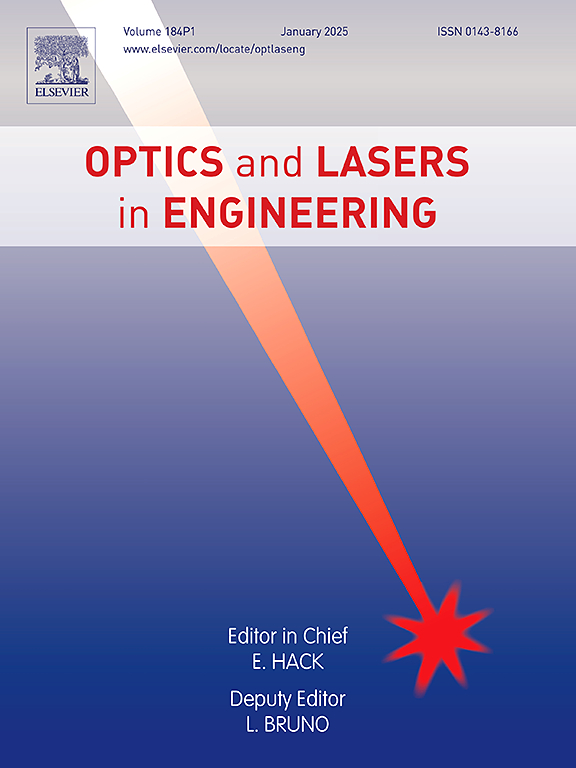Quaternion attention-based JND model for macrophotography image watermarking
IF 3.5
2区 工程技术
Q2 OPTICS
引用次数: 0
Abstract
With the advancement of imaging technology, macrophotography images (MPIs) have become a popular research topic. Unlike natural images, MPIs often feature sharp foregrounds and blurred backgrounds, leading to distinct perceptual characteristics in estimation. As the number of MPIs grows rapidly, concerns over image quality and security increase. Robust watermarking techniques have been introduced to address these challenges. Just Noticeable Difference (JND) has been widely used in quantization-based watermarking frameworks. However, existing JND models handle each image area with a single-level perceptual attention. Visual attention in Quaternion Discrete Wavelet Transform (QDWT), which can reflect the Multi-level perceptual attention feature. Therefore, we propose a new method called Quaternion Attention-based Just Noticeable Difference model for MPIs Watemarking (QAJnd-MW) for watermarking MPIs. This method uses visual attention mechanisms, recognizing that the HVS is more sensitive to attention regions. We generate a masking effect in the JND field. The input image undergoes QDWT to explore multi-scale features. The multi-scale feature maps, with multi-directional luminance and multi-channel color, help create local and global attention maps, which are fused to form the final attention map. Specifically, considering both attention-based masking effects, the quaternion attention-guided JND model is designed for a robust MPI watermarking framework, aiming to further improve MPI security. Extensive experiments on the MP2020 and Blur Detection datasets show that the proposed model significantly improves robustness against JPEG compression attacks, reducing the bit error rate (BER) by up to 12%. Additionally, the model performs well against other attacks, such as those in online social networks, with lower BER than current state-of-the-art techniques.
基于四元数注意力的 JND 模型用于微距摄影图像水印技术
随着成像技术的发展,微距摄影图像(MPI)已成为一个热门研究课题。与自然图像不同,微距摄影图像通常前景清晰、背景模糊,因此在估算时具有明显的感知特征。随着 MPI 数量的快速增长,人们对图像质量和安全性的担忧也随之增加。为了应对这些挑战,人们引入了稳健的水印技术。在基于量化的水印框架中,JND(Just Noticeable Difference)得到了广泛应用。然而,现有的 JND 模型是以单级感知注意力处理每个图像区域。四元离散小波变换(QDWT)中的视觉注意力可以反映多层次的感知注意力特征。因此,我们提出了一种用于 MPI 水印的新方法,称为基于四元数注意力的 MPI 水印可察觉差异模型(QAJnd-MW)。这种方法利用视觉注意力机制,认识到 HVS 对注意力区域更为敏感。我们在 JND 字段中产生遮蔽效应。输入图像经过 QDWT 处理,以探索多尺度特征。具有多方向亮度和多通道颜色的多尺度特征图有助于创建局部和全局注意力图,并将其融合形成最终的注意力图。具体来说,考虑到这两种基于注意力的掩蔽效应,设计了四元数注意力引导的 JND 模型,用于稳健的 MPI 水印框架,旨在进一步提高 MPI 的安全性。在 MP2020 和模糊检测数据集上进行的大量实验表明,所提出的模型显著提高了对 JPEG 压缩攻击的鲁棒性,将误码率(BER)降低了 12%。此外,该模型在应对其他攻击(如在线社交网络中的攻击)时表现出色,误码率低于当前最先进的技术。
本文章由计算机程序翻译,如有差异,请以英文原文为准。
求助全文
约1分钟内获得全文
求助全文
来源期刊

Optics and Lasers in Engineering
工程技术-光学
CiteScore
8.90
自引率
8.70%
发文量
384
审稿时长
42 days
期刊介绍:
Optics and Lasers in Engineering aims at providing an international forum for the interchange of information on the development of optical techniques and laser technology in engineering. Emphasis is placed on contributions targeted at the practical use of methods and devices, the development and enhancement of solutions and new theoretical concepts for experimental methods.
Optics and Lasers in Engineering reflects the main areas in which optical methods are being used and developed for an engineering environment. Manuscripts should offer clear evidence of novelty and significance. Papers focusing on parameter optimization or computational issues are not suitable. Similarly, papers focussed on an application rather than the optical method fall outside the journal''s scope. The scope of the journal is defined to include the following:
-Optical Metrology-
Optical Methods for 3D visualization and virtual engineering-
Optical Techniques for Microsystems-
Imaging, Microscopy and Adaptive Optics-
Computational Imaging-
Laser methods in manufacturing-
Integrated optical and photonic sensors-
Optics and Photonics in Life Science-
Hyperspectral and spectroscopic methods-
Infrared and Terahertz techniques
 求助内容:
求助内容: 应助结果提醒方式:
应助结果提醒方式:


